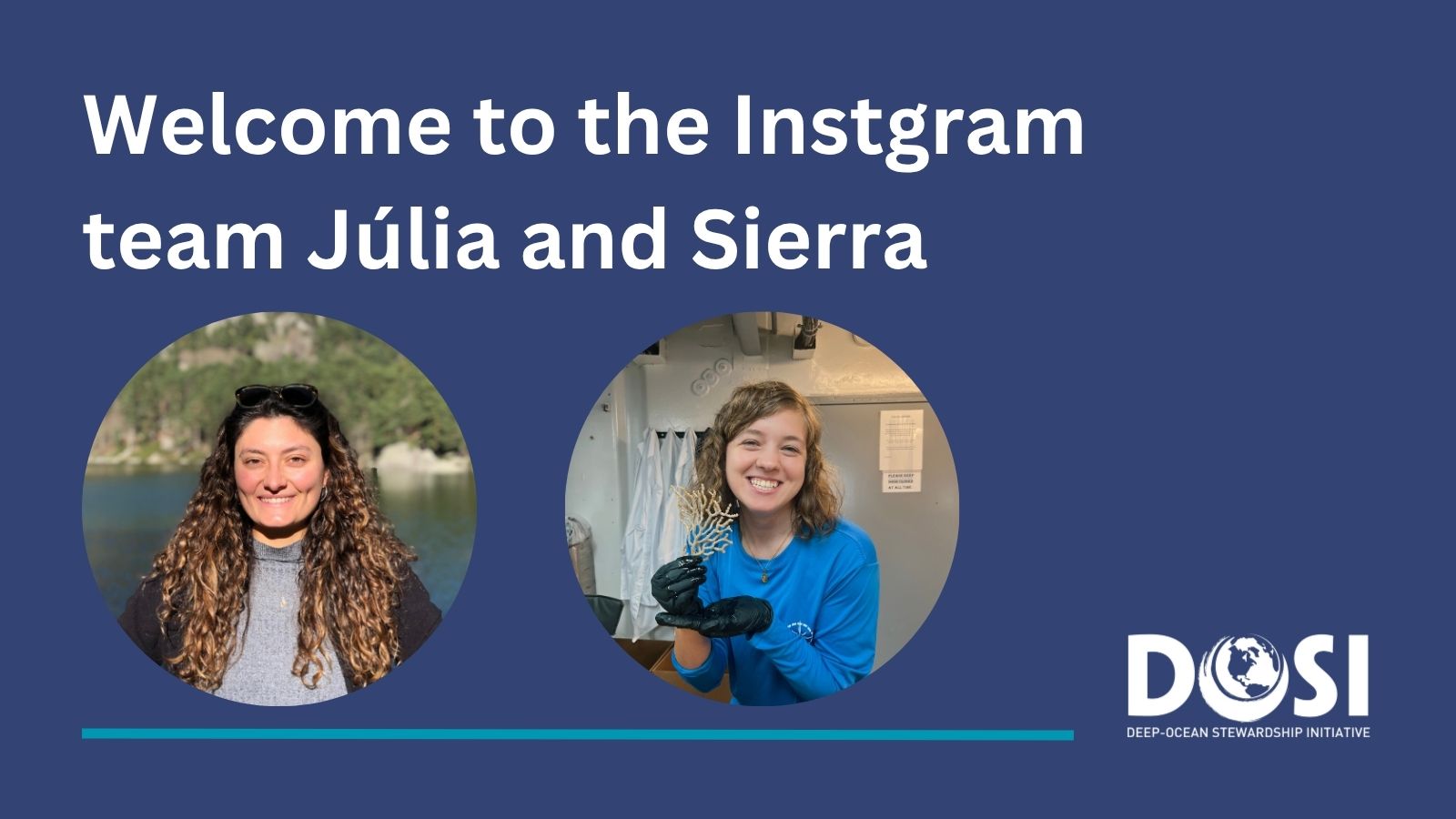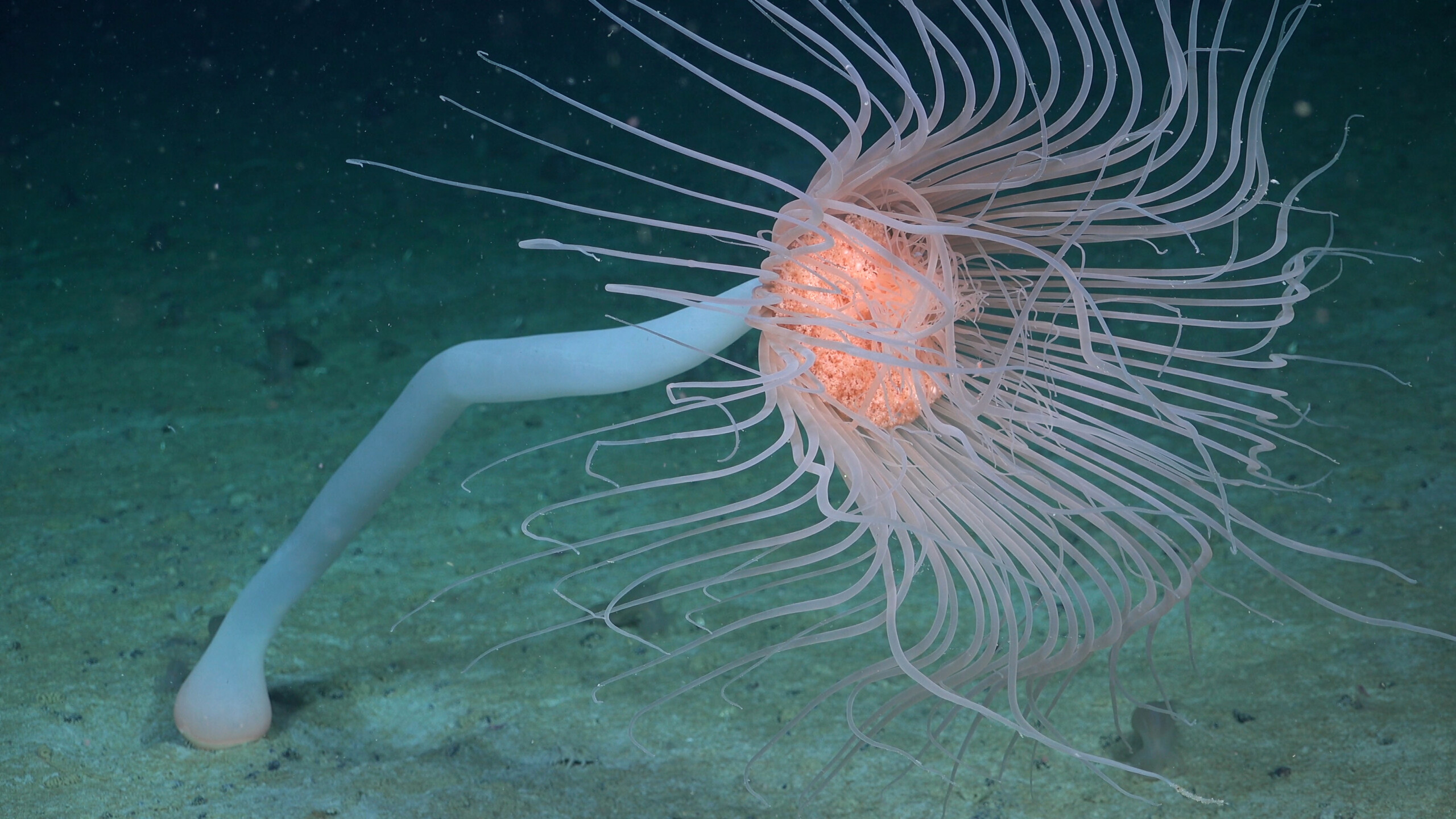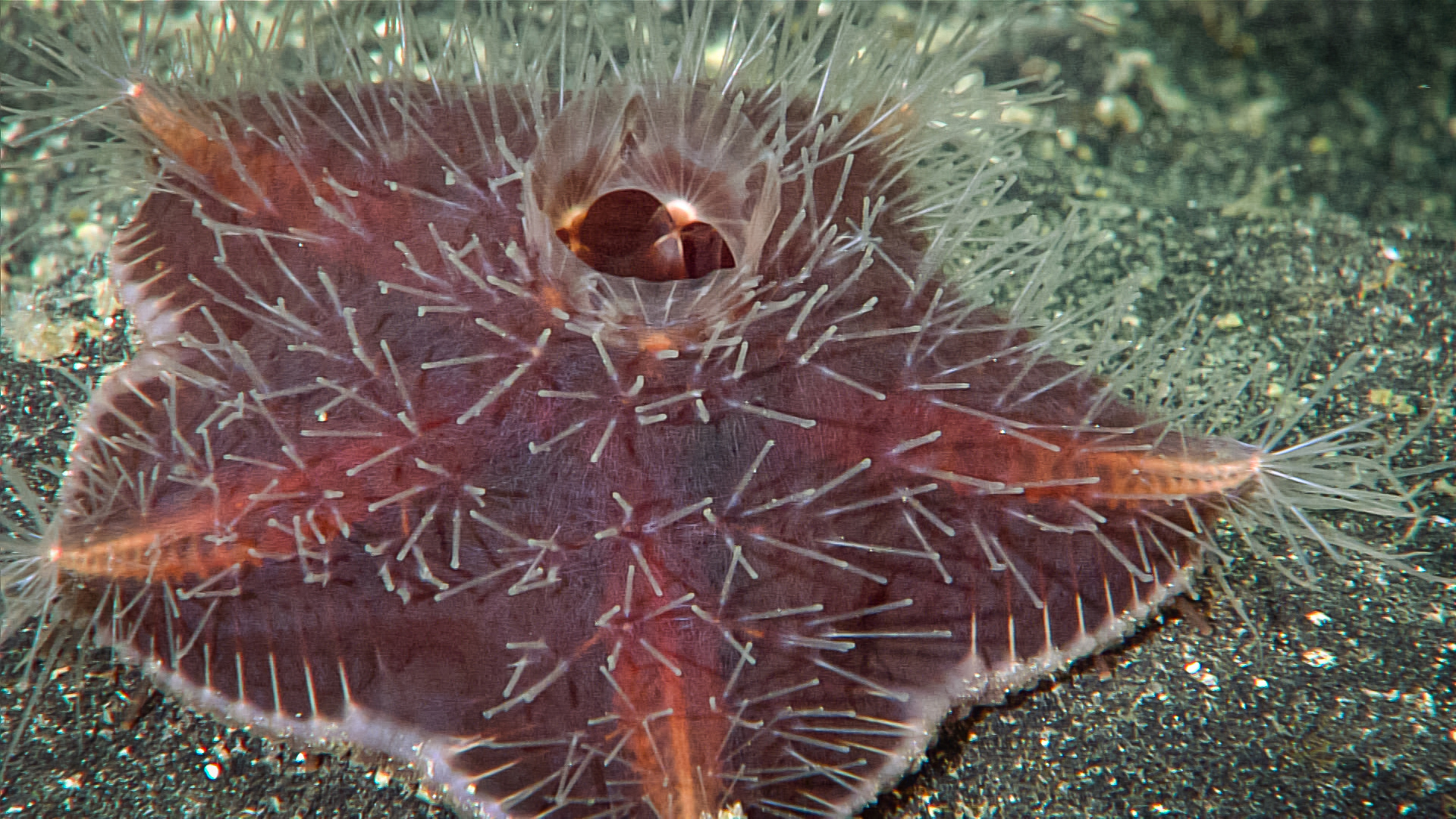We’re delighted to welcome Júlia and Sierra to the DOSI social media team. They’ll be helping share the wonders of the deep sea with audiences around the world through our Instagram platform. We…


We’re delighted to welcome Júlia and Sierra to the DOSI social media team. They’ll be helping share the wonders of the deep sea with audiences around the world through our Instagram platform. We…

A solitary hydroid drifts in currents at approximately 380 m deep in an area of the seabed that was very recently covered by the George VI Ice Shelf, a floating glacier in Antarctica. Image…

This dense bed of hydrothermal mussels covered the slope of Northwest Eifuku volcano near Champagne vent. Other vent animals like shrimps and gastropods live among the mussels. Image courtesy of the Pacific Ring of Fire 2004 Expedition, NOAA Office…

This striking chimaera, Hydrolagus trolli, was filmed at 2,268 metres in the Gascoyne Marine Park. The species is notable for its vivid blue colouration and distinctive pointed snout. Image courtesy of the Minderoo-UWA Deep-Sea Research Centre at the…

A branch of bamboo coral with an amphipod and an anemone on top of it. Image courtesy of NOAA Ocean Exploration, Seascape Alaska. This week: Newly discovered snailfish, hydrothermal vent observatories, and a new book…

This Hymenaster slime star was collected during the Papahānaumokuākea ROV and Mapping expedition at a depth of 4,354 m and likely represents a previously undescribed species. Image courtesy of NOAA Ocean Exploration, 2025 Beyond the Blue. This week:…

Periphylla jellyfish observed at 902 m by NOAA Ocean Exploration during the Papahānaumokuākea ROV and Mapping expedition. Image courtesy of NOAA Ocean Exploration, 2025 Beyond the Blue. This week: A new Policy Brief and Information Sheet from…

A crustacean from the Antarcturidae family seen perched on a sea pen during an expedition to the South Sandwich Islands. Members of the Antarcturidae are benthic isopods adapted to cold environments. Image courtesy…